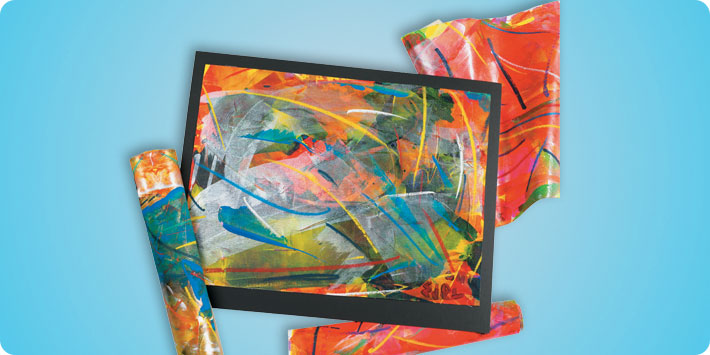American Abstract Expressionism

Description
This project deals with the infusion between Art History and Art Making through American Abstract Expressionism. American Abstract Expressionism is truly a U.S. movement that emphasizes the act of painting, inherent in the color, texture, action, style and the interaction of the artist. It may have been inspired by Hans Hofmann, Arshile Gorky and further developed by the convergence of such artists as Jackson Pollack, William DeKooning, Franz Kline, Mark Rothko and Wassily Kandinsky.
Objectives
- Students can interactively apply an art movement to an art process-painting.
- This art-infused activity strengthens their observation and awareness of a specific artists expression.
Supplies Needed
Sax® Canvas Sheets, Cotton Duck, Primed/ea., 18"x24" Sax Trueflow Acylics 403293
Bright Red 439235
Chrome Yellow 439241
Phthalo Blue 439247
Burnt Umber 439259
Mars Black 439262
Titanium Whit 439265
Trueflow Acylics Fluorescent, set of 6 Quart 402434
Liquitex® Free-Style Brushes, 4-Set 1367756
Sax® Golden Taklon Acrylic Brushes, 6-Set 411600
Royal® Jumbo Brushes, 2" width, 4-Set 410850
Complete 5 Knife Set 408928
Shiva® Artists Paintstik® Oil Color Sets, 12-Colo 244689
Shiva® Artists Paintstik® Oil Color Sets, 6-Color Set 440816
Standards
CONTENT Standard #1: Understanding and applying media, techniques and processes.
CONTENT Standard #5: Reflecting upon and assessing the characteristics and merits of their work and the work of others
Instructions
Teacher preparation:
Gather examples of artists that dominated this movement, display them in the Art Room with questions of: Who uses organic forms? Dripped and splashed work? Why the highly colored work of Kandinsky? Why the figurative aspects of DeKooning?
1
Discuss the emotions, color and structure of the displayed artists work.
2
Discuss why American Abstract Expressionism is less about style than attitude.
3
Discuss why these artists have such an attachment of self expression as found in their paintings yet not necessarily found in more academic work?
4
Gather the materials and explain why the vivid colors of Fluorescent Acrylics were used, and what they do within a painting. The juxtaposition of primary colors can infuse into a secondary-tertiary color under certain applications.
5
Apply canvas sheets to art work surfaces with masking tape. These sheets can easily be removed for drying and storage.
6
Recreate the theme of an American Abstract Expressionist Artist.
7
Using the larger brushes or painting knives, apply layering broad strokes, working from background to foreground, lighter colors to darker colors.
8
Intuitively add additional paint application and always evaluate work as progress is being made.
9
The use of the Platinum Acylic adds a reflective tint to primary-secondary-terirary colors. It can also produce results as an expressionistic medium alone. 10 Let paintings completely dry.
10
Artists Paintstik® can be applied as a final calligraphic element to outline, indicate movement or highlight a certain area.
11
Do not apply Gloss Medium, Tempera Varnish, etc., as it tends to mask the brightness-effects of the Fluorescent or luminous qualities of the reflective Platinum Medium.
12
Curate the painting with: Title, name and date.






